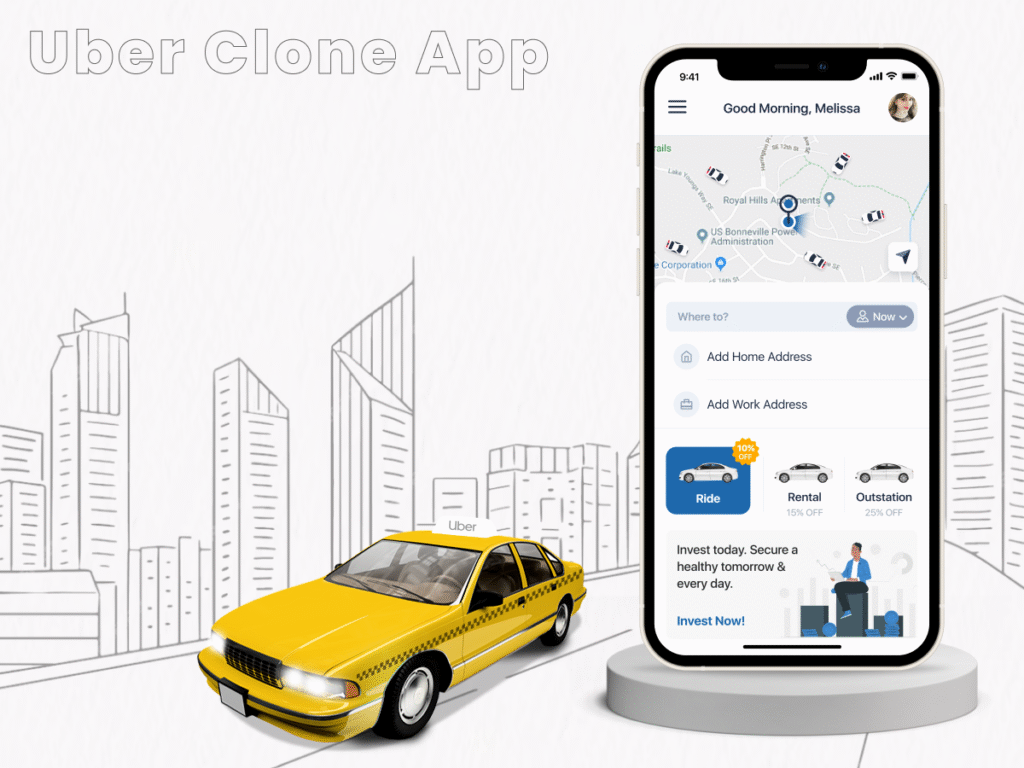
An Uber clone app is a ride-hailing application that replicates the core features and functionality of Uber, including real-time ride booking, driver and passenger matching, GPS tracking, fare calculation, and payment integration. It allows entrepreneurs, startups, or businesses to launch their own taxi or mobility service platform quickly by using pre-built app architectures and frameworks modeled after Uber’s technology.
The ride-hailing industry has transformed urban transportation, with companies like Uber and Lyft leading the charge. But if you’re wondering whether it’s too late to enter the market, the answer is clear: now is the best time to launch your own Uber clone app. Here’s why.
1. The Ride-Hailing Market Is Still Growing
Even though there are too many established businesses in major cities, demand for ride-hailing services is still rising globally. Market projections indicate that by 2030, the industry will have grown to a value of over $200 billion.
This growth is driven by:
- Increased smartphone penetration
- Expanding urban populations
- Under-served regions in Asia, Africa, and Latin America
By targeting emerging markets and underserved areas, new ride-hailing platforms still have plenty of room to grow.
2. The Uber Model Is Proven — All You Need Is Localization
Uber invested years and billions of dollars to develop a successful business model. Instead of creating it from scratch, you should modify it to fit your area of specialty. That means:
- Partnering with local drivers and vehicle owners
- Supporting regional payment methods and currencies
- Complying with local laws and transport regulations
Localization helps you compete with global giants by building trust and familiarity with your users.
3. Development Costs Are Lower Than Ever
It is now quicker, less expensive, and more effective to create an Uber clone app than it was a few years ago. The reason behind this is
- Pre-built Uber clone scripts are widely available
- Open-source technologies reduce licensing costs
- Developers are more experienced with this type of app
You can launch a functional ride-hailing MVP in as little as 30 to 60 days, depending on the features you choose to include.
4. There’s Room for Diversification
Modern apps are expected to perform more than just book rides, in contrast to Uber’s original business model. Many startups are expanding into:
- Food and grocery delivery
- Courier services
- Two-wheeler or electric scooter rentals
- Carpooling or shared rides
By launching an Uber clone app today, you position yourself to scale horizontally across related industries in the future.
5. Consumer Preferences Are Shifting
Users are more open to trying out alternatives to well-known apps now than they were in the past. Factors influencing this shift include:
- Pricing sensitivity
- Interest in local brands and solutions
- Concerns around data privacy and safety
If your app can offer a better user experience, more reliable support, or targeted features, you can win over users in your region.
6. The Asset-Light Model Still Works
One of the main reasons Uber grew so quickly was that it didn’t require full-time staff or car ownership. That model is still relevant today. Create your own Uber-like app with a driver-onboarding, fleet-less strategy that saves a lot of money upfront.
You concentrate on operations and technology, and drivers take care of their cars.
Conclusion
The moment to release an Uber clone app has never been greater, as customers are searching for local alternatives, market demand is increasing, and development obstacles are at an all-time low.
Success depends on careful preparation, localization, and releasing at the ideal moment, which is now, regardless of whether you’re aiming for a particular city, niche market, or an entire area.



